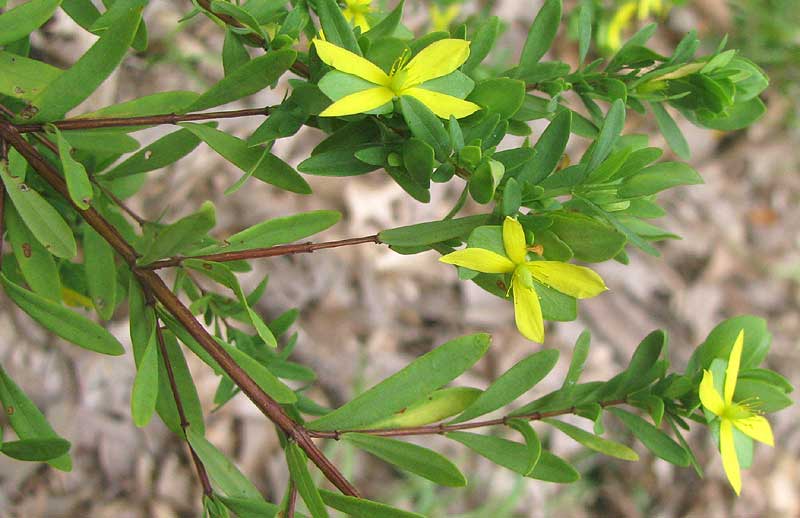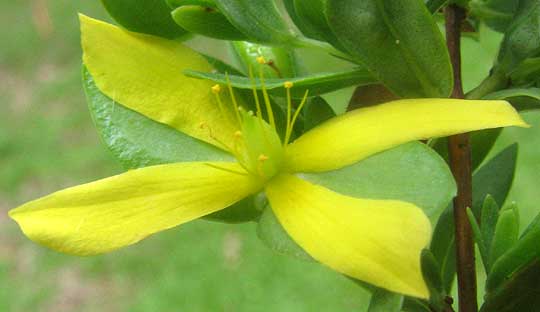Excerpts from Jim Conrad's
Naturalist Newsletter

from the the August 12, 2012 Newsletter issued from the woods of the Loess Hill Region a few miles east of Natchez, Mississippi, USA
ST. ANDREW'S CROSS
Nowadays a common, yellow-flowered, knee-high shrub catches the eye with its four quarter-inch long (8mm) petals asymmetrically arrayed like squashed Xs on reddish-brown, slender, stiff branches with opposite, simple leaves, as shown above.
Below, a close-up shows the blossom's greenish, flattened ovary in the flower center bearing two diverging styles, and several stamens arising from the ovary's base:

The flower looks as if only two large sepals arise beneath its petals but actually there are four, just that one pair is much smaller.
These features depart quite a bit from the "average blossom" most of us carry in our heads, which is radially symmetrical, bears five sepals, five petals, maybe five stamens, and an egg-shaped ovary with one style in the center. Really this little flower is more iconoclastic than it seems at first glance.
Here we're talking about St. Andrew's Cross, HYPERICUM HYPERICOIDES, usually found in dry, open woods, on upland slopes and ridges and the like. It reaches as far north along the Atlantic coast as New York and Massachusetts, and inland to southern Illinois, and south through eastern Mexico, and through the Caribbean area.
St. Andrew's Cross is very closely related (same genus) to St. John Wort whose dried parts often are sold as an herbal remedy for depression. St. Andrew's Cross has been used traditionally for problems ranging from snakebites to diarrhea and kidney problems to skin problems, but nowadays it's not regarded as being particularly medicinal. One unusual feature is that contact with the sap can cause photosensitivity in certain people. Photosensitive people are more vulnerable to sunburn.